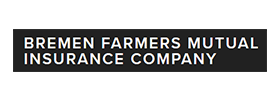Nowadays, it seems like everything’s costing us more. Gas, rent, electricity, groceries – and auto insurance. To combat the rise in insurance rates, a lot of drivers are looking for alternative ways to save. Discounts are the easiest and most reliable means of saving on auto insurance, and virtually all drivers qualify for at least one.
Let’s look at one of the more common auto insurance discounts: a continuous insurance discount. This auto insurance discount rewards drivers for maintaining their insurance over a certain period of time. Most insurers offer this discount, although how much of a discount they offer and for what period of time the driver qualifies for the discount will vary.
What Does “Continuous Insurance” Mean?
Continuous insurance is as the name implies: time spent being continuously insured. Some insurers offer this discount on a graded scale, so drivers who have had 5 years of continuous insurance may be discounted 5%, where drivers with 10+ years of continuous insurance history might have a discount of 10%+ or more. This includes time spent with your current insurer, and oftentimes the time you spent with your previous insurer as well – assuming there’s no lapse in coverage between policies.
Why Do Insurers Reward Continuous Insurance?
Experience is key. The more experienced you are, the likelier you are to practice good driving behaviours and possibly even handle small damages yourself without filing a claim. If you’re newly insured, there’s a higher chance you’re a younger, less experienced driver who is likelier to file a claim versus dealing with the damages yourself. Having a strong, uninterrupted insurance history usually serves as a signal to potential insurance providers that you are a responsible driver who is low-risk and understands how important it is to have insurance.
Having a continuous insurance history goes beyond qualifying you for a discount. A good insurance history can mean more options for coverage from a broader range of insurers. It can also mean better rates, since a cancellation or even a lapse in coverage can hike your rates.
If you need to change insurers at any point in your policy period, whether because that insurer stops serving your area, because you’ve become uninsurable, etc., we advise finding a new policy ASAP to avoid a lapse in coverage. Contact an AHI agent to help you. The last thing you’ll need is to find yourself in a situation where you’re without insurance. Not only is it illegal to drive without auto insurance in many states, but it’s just not a good idea for your wallet or for your peace of mind.
Other Loyalty-Based Auto Insurance Discounts
A continuous insurance auto discount is just one of many auto discounts that exist – and just one of the several loyalty-based discounts that are out there. Here are several other types of loyalty-based discounts for auto insurance that you could be eligible for:
Multi-Policy
Also known as a bundle discount, a multi-policy discount is an opportunity to save when you have two or more policies through the same insurer. For example, if you have a home policy through one insurer, you might consider buying your auto insurance through the same insurer to enjoy a discount. Discounts can be anywhere from 5%-10%. Some insurers also offer discount opportunities for other insurance products, like RV insurance, motorcycle insurance, etc.
Multi-Car
Similar to above, you can save when you have more than one automobile on your policy. You don’t necessarily need to be the registered owner of both vehicles, either. You can add any vehicle to your policy that belongs to someone living with you, usually a spouse, roommate, or family member. The second vehicle must be kept primarily at the same address as the first vehicle.
Why Shouldn’t I Cancel My Auto Insurance?
Cancelling your auto insurance and having a lapse in your auto insurance history will void your continuous insurance discount. Most insurers recommend against cancelling your auto insurance, but in some glaringly obvious cases there isn’t much other choice.
There are many reasons why someone would cancel their auto insurance. Here are some of the most common:
- Dissatisfaction with price: You may choose to cancel your auto insurance due to dissatisfaction with your price and the urge to shop elsewhere for a more cost-effective option.
- Sold your vehicle: If you’ve sold your car, you’ll no longer need insurance.
- Bundling policies: You may have discovered a bundle policy opportunity with another provider that will end up saving you more money. Ask an AHI agent about bundle discounts.
However, if you’re entering into a temporary situation where you may not have access to your car, whether due to an extended trip, a work-from-home arrangement, or because you’re putting away your car over the winter, hold off on cancelling. We advise you keep your insurance going to avoid any cancellation penalties, avoid a lapse in coverage on your record, and to maintain your continuous insurance history discount. You can reduce coverage temporarily, which will cost you less than if you maintained your full policy.
If you’re entering a period where you won’t have access to your vehicle or won’t be driving, ask an agent for their advice on your next steps. Everyone’s situation is different.






























